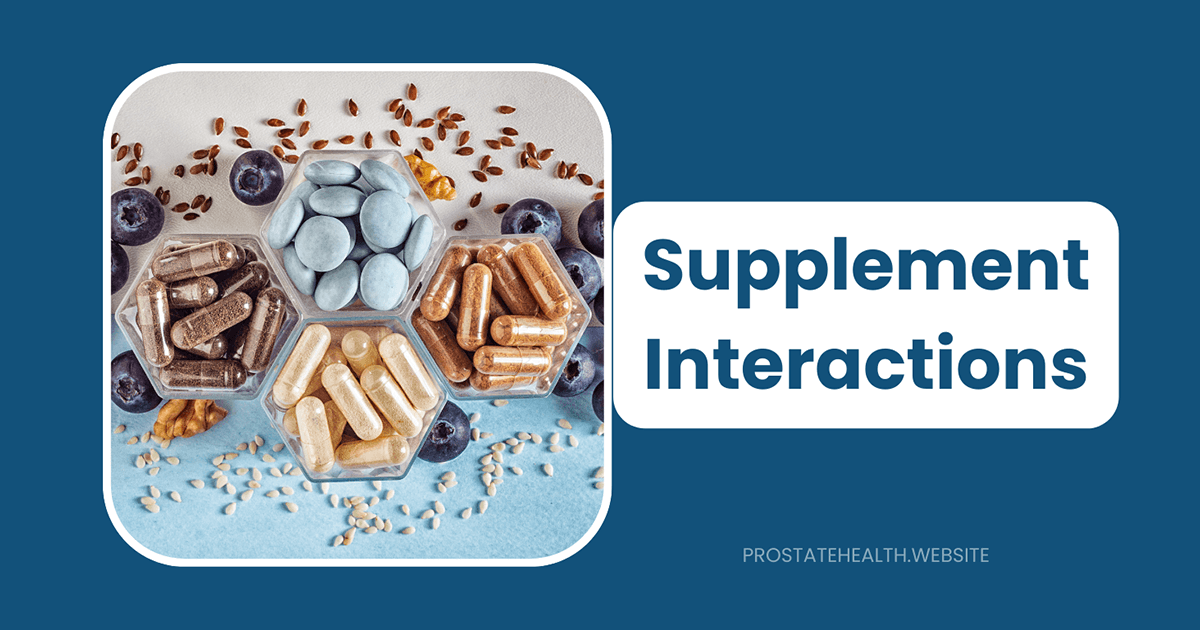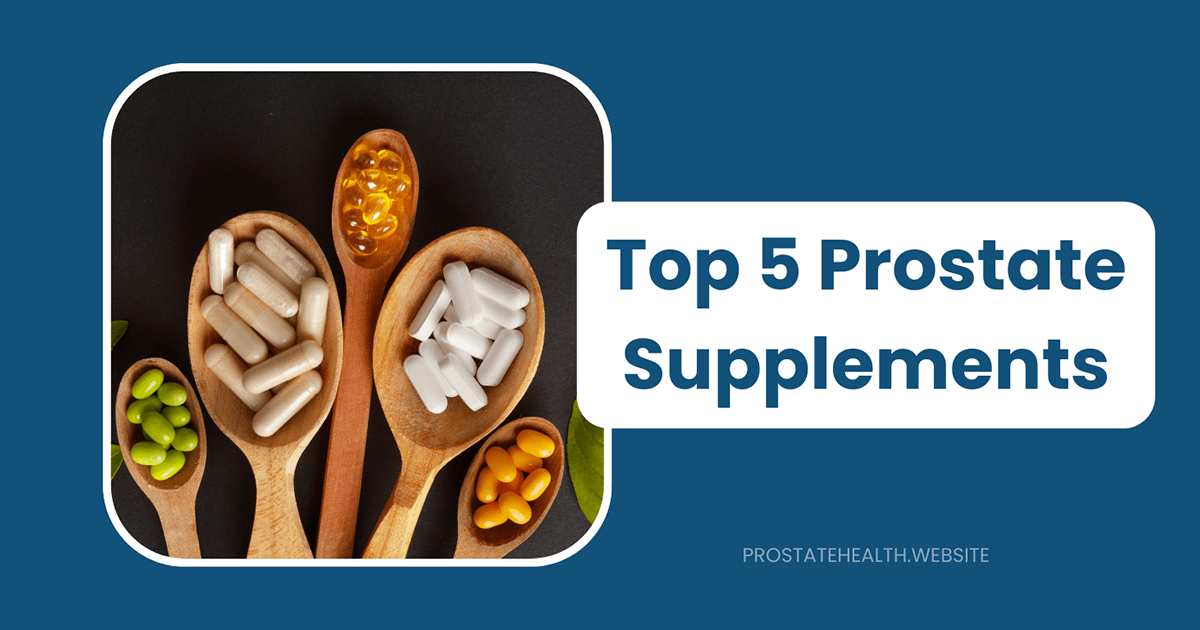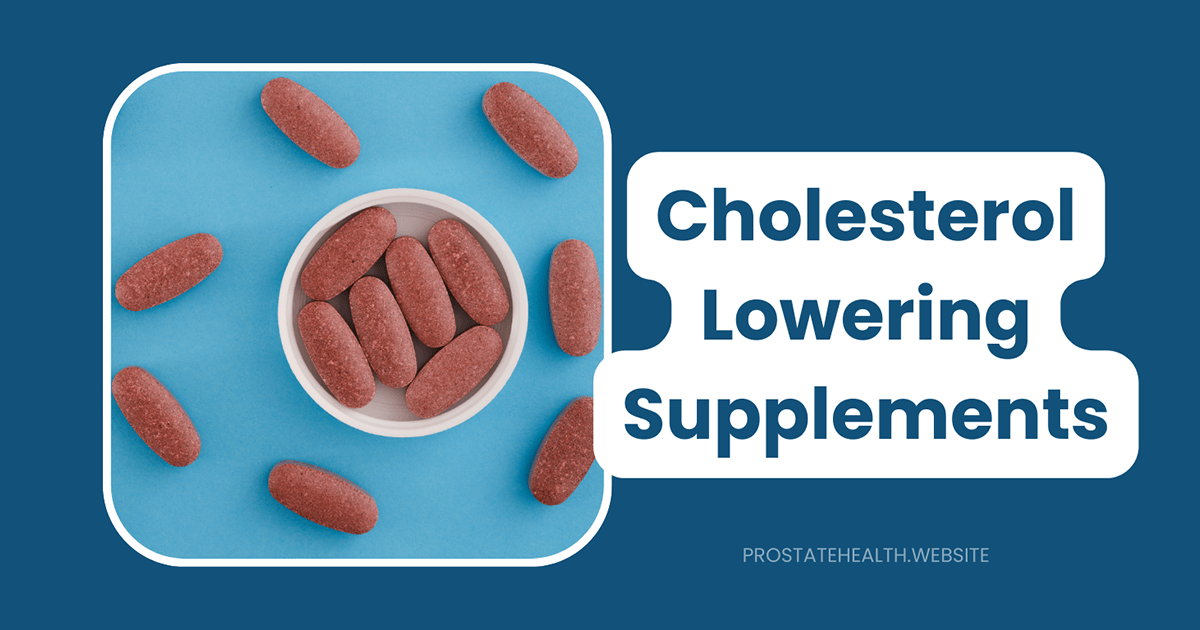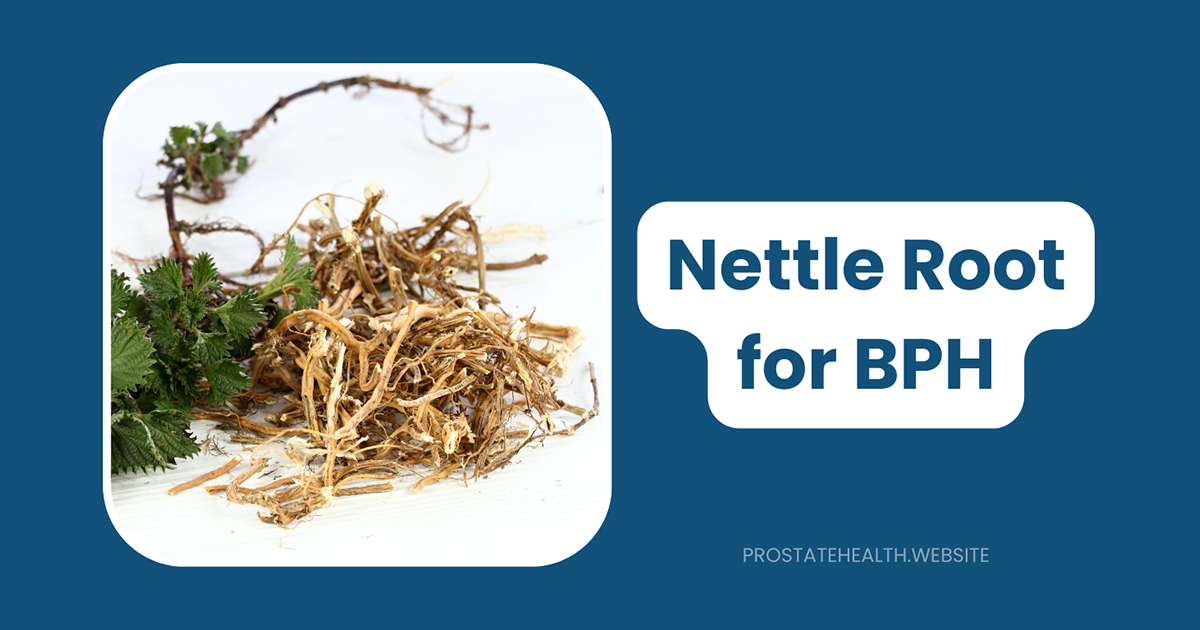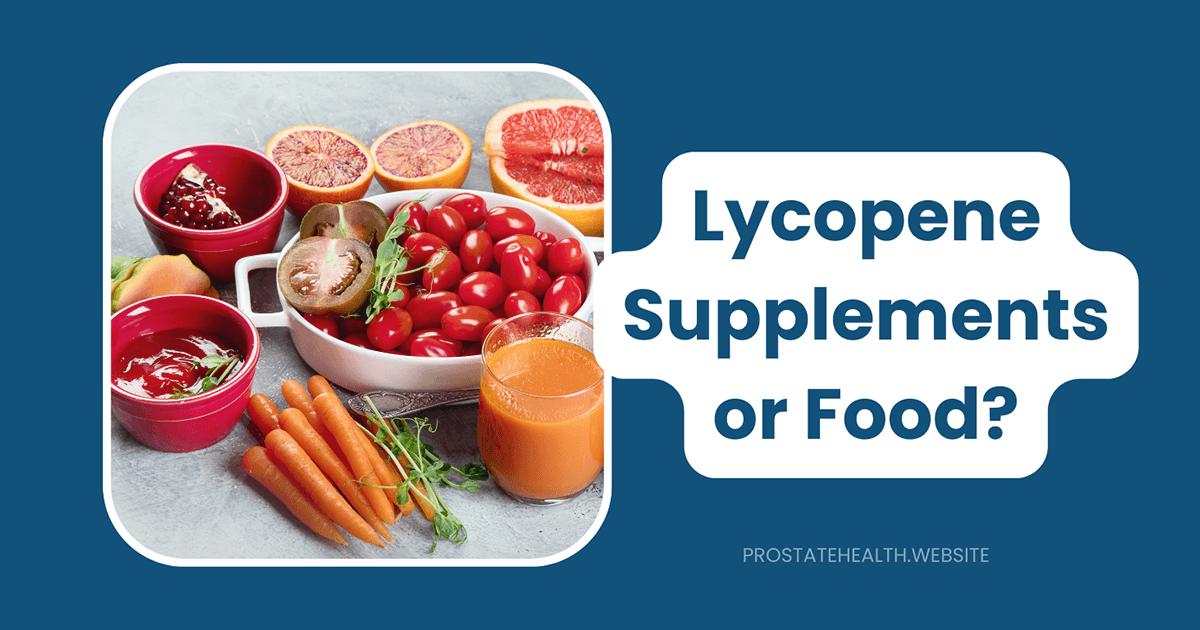Creating a Supplement Regimen for Prostate Health: A Practical Guide
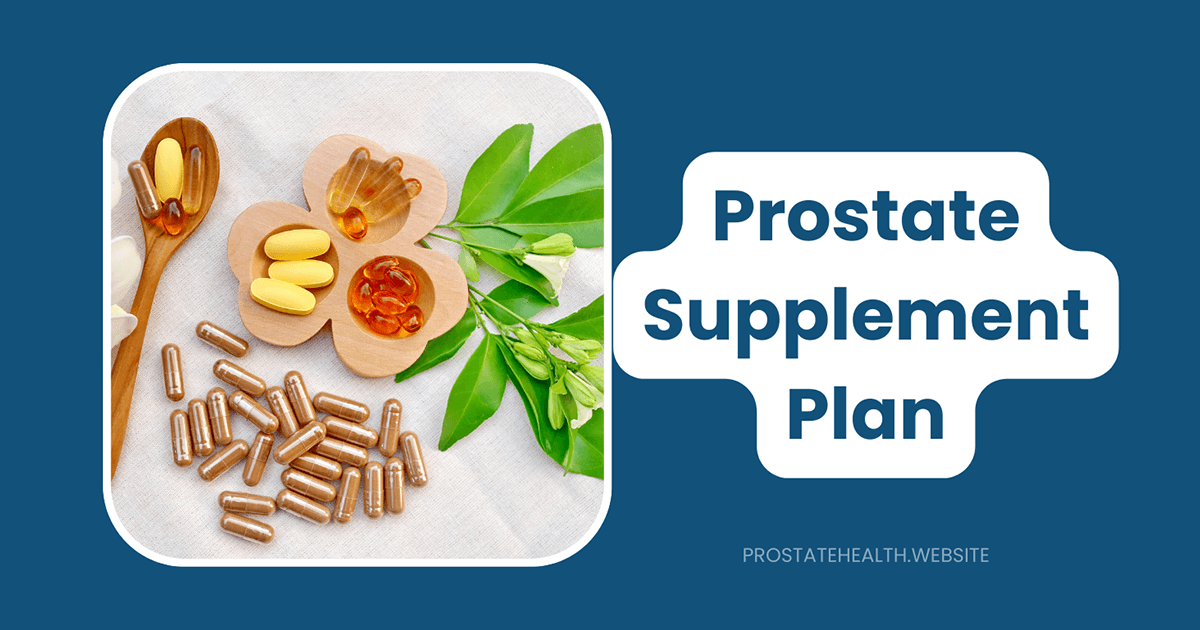
If you’re like many men over 40, you’ve probably found yourself in the supplement aisle, staring at dozens of bottles promising prostate miracles. The sheer number of options can be overwhelming, and the bold claims on the packaging don’t make the decision any easier.
As someone who’s spent years advocating for men’s prostate health, I’ve seen both the benefits and limitations of supplements firsthand. The truth is, while supplements can play a valuable role in supporting prostate health, they’re not magic pills—and not all are created equal.
This guide will help you navigate the complex world of prostate supplements with evidence-based recommendations, practical dosing information, and a framework for creating a personalized prostate supplement plan that complements your overall health strategy.
Why Prostate Health Matters
Before diving into supplements, let’s understand why prostate health deserves your attention:
- Prostate cancer is the second most common cancer among men in the United States
- Benign prostatic hyperplasia (BPH) affects about half of men by age 60 and the majority by their 80s
- Prostatitis and other inflammatory conditions can significantly impact quality of life
- Prostate issues can affect urinary function, sexual health, and overall wellbeing
This small gland plays a crucial role in male reproductive health. Taking a proactive approach to prostate health—including thoughtful supplementation—may help maintain its function and potentially reduce your risk of problems down the road.
The Foundation: Diet and Lifestyle First
Before we discuss specific supplements, it’s important to emphasize that supplements should complement—not replace—a healthy lifestyle. The most effective prostate health strategy starts with:
- A plant-forward diet: Rich in vegetables, fruits, whole grains, and legumes
- Regular physical activity: At least 150 minutes of moderate exercise weekly
- Maintaining a healthy weight: Obesity is linked to increased prostate cancer risk
- Adequate hydration: Supporting overall urinary health
- Regular medical check-ups: Including appropriate prostate screenings
Research consistently shows that men who follow a Mediterranean-style diet have lower rates of prostate cancer progression. This eating pattern emphasizes anti-inflammatory foods that support overall prostate function.
Evidence-Based Prostate Supplements: What Works?
Now, let’s examine the supplements with the strongest scientific evidence for prostate health support:
1. Saw Palmetto (Serenoa repens)
What it is: An extract from the berries of the saw palmetto palm tree.
How it may help: May reduce urinary symptoms associated with BPH by inhibiting 5-alpha reductase, the enzyme that converts testosterone to dihydrotestosterone (DHT).
Research status: Mixed results. While some studies show benefits for mild to moderate BPH symptoms, a 2024 Cochrane Review of 27 placebo-controlled studies with 4,656 participants showed no significant improvement in urinary symptoms or quality of life.
Recommended dosage: 320-960 mg daily, standardized to contain 85-95% fatty acids and sterols.
Best for: Men with mild BPH symptoms who prefer a natural approach before prescription medications.
“While saw palmetto remains popular, the scientific evidence for its effectiveness is not as strong as once thought. That said, it appears to be safe for most men and may provide benefits for some individuals.” – Dr. Aaron Katz, urologist and author of “The Definitive Guide to Prostate Cancer”
2. Beta-sitosterol
What it is: A plant sterol found in many fruits, vegetables, nuts, and seeds.
How it may help: May improve urinary symptoms of BPH by reducing inflammation and inhibiting 5-alpha reductase.
Research status: Several randomized controlled trials show modest improvements in urinary flow rate and symptom scores.
Recommended dosage: 60-130 mg daily.
Best for: Men with mild to moderate BPH symptoms, particularly when combined with saw palmetto.
3. Pygeum Africanum (African Cherry)
What it is: Extract from the bark of the African cherry tree.
How it may help: Contains compounds that may reduce inflammation and block DHT production.
Research status: Some positive studies for BPH symptom relief, though generally less researched than saw palmetto.
Recommended dosage: 75-200 mg daily of standardized extract.
Best for: Men looking to complement saw palmetto with another herbal approach.
4. Stinging Nettle Root (Urtica dioica)
What it is: Extract from the root of the stinging nettle plant.
How it may help: Contains compounds that may reduce inflammation and interact with sex hormone binding globulin (SHBG).
Research status: Limited but promising research, particularly when combined with saw palmetto.
Recommended dosage: 120-300 mg daily.
Best for: Men seeking a complementary herb to use alongside saw palmetto.
5. Lycopene
What it is: A carotenoid antioxidant found primarily in tomatoes and other red fruits.
How it may help: Powerful antioxidant that may help protect prostate cells from oxidative damage.
Research status: Observational studies show associations between higher lycopene intake and lower prostate cancer risk, though intervention studies show mixed results.
Recommended dosage: 15-45 mg daily.
Best for: Men focused on prostate cancer prevention, particularly those with family history.
6. Selenium
What it is: An essential trace mineral with antioxidant properties.
How it may help: Supports DNA stability and has antioxidant effects that may protect prostate cells.
Research status: Mixed results. Some studies suggest benefits for men with low selenium status, while others show potential harm with high doses in men who already have adequate levels.
Recommended dosage: 55-200 mcg daily, with caution not to exceed the upper limit of 400 mcg from all sources.
Best for: Men with confirmed low selenium status; not recommended for men with normal or high levels.
7. Zinc
What it is: An essential mineral concentrated in the prostate.
How it may help: Supports immune function and prostate tissue health.
Research status: Mixed results. While the prostate contains high zinc concentrations, excessive supplementation may be harmful.
Recommended dosage: 11-15 mg daily (RDA for adult men), with caution not to exceed 40 mg daily from all sources.
Best for: Men with confirmed zinc deficiency; not recommended in high doses for extended periods.
8. Vitamin D
What it is: A fat-soluble vitamin produced in the skin in response to sunlight.
How it may help: Regulates cell growth and may reduce inflammation in the prostate.
Research status: Observational studies show associations between vitamin D deficiency and increased prostate cancer risk, though intervention studies are limited.
Recommended dosage: 1,000-2,000 IU (25-50 mcg) daily, with adjustments based on blood levels.
Best for: Men with confirmed vitamin D deficiency or insufficiency.
Creating Your Personalized Supplement Regimen
Now that we’ve covered the evidence-based options, let’s develop a framework for creating your personalized prostate supplement regimen:
Step 1: Assess Your Specific Needs
Start by considering your current prostate health status:
- For general prostate health maintenance: Focus on foundational nutrients and mild support
- For mild BPH symptoms: Consider herbal options with evidence for symptom relief
- For prostate cancer prevention: Emphasize antioxidants and anti-inflammatory compounds
- For support during prostate cancer treatment: Consult with your oncology team before taking any supplements
Step 2: Get Baseline Testing
Before starting supplements, consider these tests:
- Comprehensive blood panel: Including PSA, vitamin D, zinc, and selenium levels
- Urinary symptom assessment: International Prostate Symptom Score (IPSS) if you have urinary symptoms
- Medical evaluation: To rule out serious conditions requiring medical intervention
Step 3: Start with Core Supplements
Based on your needs and test results, consider these foundational approaches:
For General Prostate Health Maintenance:
- Vitamin D: 1,000-2,000 IU daily (if levels are low)
- Lycopene: 15-20 mg daily
- Zinc: 15 mg daily (only if levels are low)
For Mild BPH Symptoms:
- Saw Palmetto: 320 mg daily (standardized extract)
- Beta-sitosterol: 60-130 mg daily
- Nettle Root: 120-240 mg daily
For Prostate Cancer Prevention Focus:
- Lycopene: 20-45 mg daily
- Selenium: 55-200 mcg daily (only if levels are low)
- Vitamin D: 1,000-2,000 IU daily (if levels are low)
- Green Tea Extract: 500-1,000 mg daily (standardized to 45-55% EGCG)
Step 4: Consider Combination Products
Many prostate supplements contain multiple ingredients. These can be convenient but evaluate them carefully:
Advantages of combination products:
- Convenience of fewer pills
- Potentially synergistic effects
- Often more economical
Disadvantages of combination products:
- Less control over individual dosages
- May include unnecessary ingredients
- Often contain suboptimal doses of key ingredients
If choosing a combination product, look for:
- Transparent labeling with clear dosages
- Standardized extracts
- Third-party testing certification
- Minimal fillers and additives
Step 5: Implement Gradually and Monitor
Once you’ve selected your supplements:
- Start one at a time: Introduce each supplement separately over 1-2 weeks to identify any adverse reactions
- Track your response: Keep a journal of urinary symptoms, energy levels, and any side effects
- Be patient: Most prostate supplements require 4-12 weeks of consistent use before benefits appear
- Reassess regularly: After 3 months, evaluate whether you’re experiencing benefits
- Adjust as needed: Modify dosages or discontinue supplements that aren’t providing benefits
Sample Prostate Supplement Regimens
Here are three evidence-based regimens for different scenarios:
Basic Prostate Health Maintenance Regimen
Morning:
- Multivitamin containing zinc (15 mg) and selenium (55 mcg)
- Vitamin D3 (1,000 IU) if levels are low
Evening:
- Lycopene (15 mg)
Mild BPH Symptom Support Regimen
Morning:
- Saw palmetto extract (160 mg)
- Beta-sitosterol (65 mg)
- Vitamin D3 (1,000 IU) if levels are low
Evening:
- Saw palmetto extract (160 mg)
- Nettle root extract (120 mg)
- Pygeum africanum extract (100 mg)
Comprehensive Prostate Support Regimen
Morning:
- Saw palmetto extract (160 mg)
- Beta-sitosterol (65 mg)
- Zinc (15 mg, only if levels are low)
- Vitamin D3 (1,000 IU) if levels are low
Afternoon:
- Green tea extract (500 mg, standardized to 45% EGCG)
Evening:
- Saw palmetto extract (160 mg)
- Nettle root extract (120 mg)
- Lycopene (20 mg)
- Selenium (100 mcg, only if levels are low)
Quality Matters: How to Choose Effective Supplements
The supplement industry is largely unregulated, meaning quality can vary dramatically between products. To ensure you’re getting effective, safe supplements:
1. Look for Third-Party Testing
Choose products certified by organizations like:
- USP (United States Pharmacopeia)
- NSF International
- ConsumerLab
- Informed-Choice
These certifications verify that products contain what they claim and are free from contaminants.
2. Check for Standardization
For herbal supplements, standardization ensures consistent levels of active compounds. Look for:
- Saw palmetto standardized to 85-95% fatty acids and sterols
- Pygeum standardized to 13-14% triterpenes
- Green tea extract standardized to 45-55% EGCG
3. Evaluate the Manufacturer
Reputable supplement companies:
- Manufacture in FDA-registered facilities
- Follow Good Manufacturing Practices (GMP)
- Provide transparent information about sourcing and testing
- Have been in business for several years
4. Read the Fine Print
Avoid supplements that:
- Make disease claims (these violate FDA regulations)
- Contain proprietary blends without disclosing individual ingredient amounts
- Include unnecessary fillers, artificial colors, or preservatives
- Contain extremely high doses far exceeding recommendations
Potential Interactions and Safety Considerations
Even natural supplements can interact with medications or cause side effects. Be aware of these important safety considerations:
Medication Interactions
- Saw palmetto, pygeum, and nettle root: May enhance the effects of prescription BPH medications like finasteride (Proscar) and tamsulosin (Flomax)
- Saw palmetto: May interact with blood thinners, increasing bleeding risk
- Green tea extract: May reduce the effectiveness of certain medications, including some antibiotics and psychiatric drugs
- Zinc and selenium: High doses may interfere with certain antibiotics and other medications
Special Populations
- Men on blood thinners: Use caution with saw palmetto, pygeum, and high-dose vitamin E
- Men with hormone-sensitive cancers: Consult your oncologist before using any supplements that may affect hormone levels
- Men with diabetes: Some supplements may affect blood sugar levels
- Men with upcoming surgery: Discontinue most supplements at least 2 weeks before surgery
When to Avoid Supplements
Supplements are not appropriate for everyone. Skip them if:
- You have undiagnosed urinary symptoms (see a doctor first)
- You’re experiencing severe symptoms that require medical attention
- You’re already taking prescription medications for prostate conditions (unless approved by your doctor)
- You have a history of adverse reactions to supplements
Beyond Supplements: Complementary Approaches
While supplements can support prostate health, they work best as part of a comprehensive approach:
Dietary Strategies
- Increase tomato products: Cooked tomatoes provide readily available lycopene
- Consume cruciferous vegetables: Broccoli, cauliflower, and kale contain compounds that may support prostate health
- Include healthy fats: Olive oil, avocados, and fatty fish provide anti-inflammatory benefits
- Limit red meat and dairy: High consumption has been associated with increased prostate cancer risk
- Moderate alcohol consumption: Excessive alcohol may worsen BPH symptoms
Lifestyle Modifications
- Regular exercise: Aim for at least 30 minutes of moderate activity most days
- Stress management: Chronic stress may worsen prostate inflammation
- Adequate sleep: Poor sleep can increase inflammation throughout the body
- Pelvic floor exercises: May help improve urinary symptoms
- Regular ejaculation: Some studies suggest this may support prostate health
Tracking Your Progress
To determine if your supplement regimen is working:
- Document baseline symptoms: Before starting supplements, record your current symptoms using tools like the International Prostate Symptom Score (IPSS)
- Set clear goals: Define what improvements you hope to see (e.g., reduced nighttime urination, improved urinary flow)
- Create a tracking system: Use a journal or app to monitor symptoms, supplement compliance, and any side effects
- Schedule follow-up testing: Plan for follow-up PSA testing and other relevant assessments after 3-6 months
- Reassess regularly: Every 3-6 months, evaluate whether your regimen is providing benefits and make adjustments as needed
When to Consult a Healthcare Provider
While supplements can be part of a self-care approach, certain situations warrant professional guidance:
- Before starting any supplement regimen if you have existing health conditions or take medications
- If you experience new or worsening urinary symptoms
- If you develop side effects from supplements
- If your PSA levels are elevated or rising
- If you’re considering supplements during cancer treatment
Consider working with healthcare providers who are knowledgeable about integrative approaches, such as:
- Urologists with training in integrative medicine
- Naturopathic doctors who specialize in men’s health
- Integrative medicine physicians
- Clinical nutritionists with expertise in men’s health
The Bottom Line: A Balanced Approach to Prostate Supplements
Creating an effective prostate supplement plan requires balancing scientific evidence with your individual needs. Remember these key principles:
- Start with lifestyle fundamentals: Diet, exercise, and stress management form the foundation of prostate health
- Be realistic about expectations: Supplements may support prostate health and provide modest symptom relief, but they’re not cures
- Prioritize quality over quantity: A few high-quality, evidence-based supplements are better than many low-quality ones
- Personalize your approach: Your optimal regimen should be based on your specific health status, symptoms, and goals
- Integrate with conventional care: Supplements should complement, not replace, appropriate medical care and screening
By following these guidelines and working with knowledgeable healthcare providers, you can develop a prostate supplement regimen that supports your overall health and potentially reduces your risk of prostate problems as you age.
References:
- Harvard Health Publishing
- National Cancer Institute
- VeryWell Health
- Rush University Medical Center
- Journal of Clinical Nutrition

